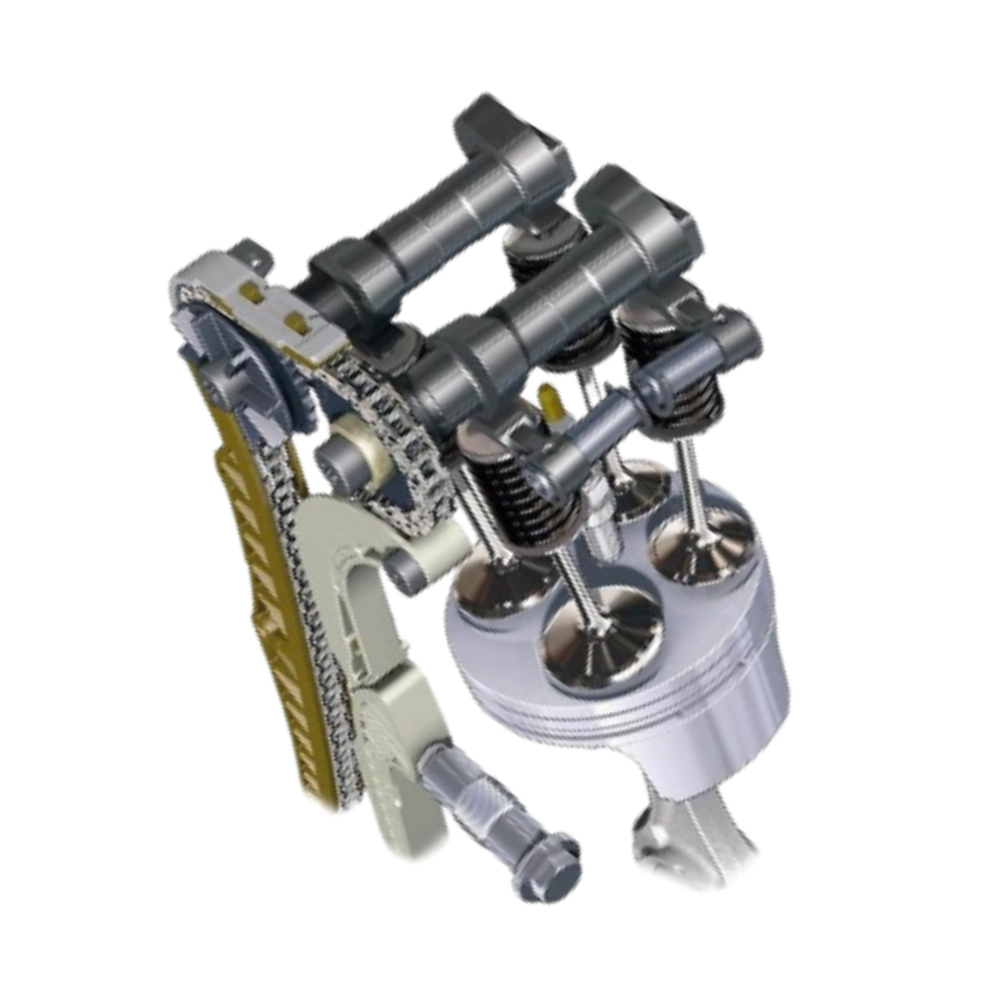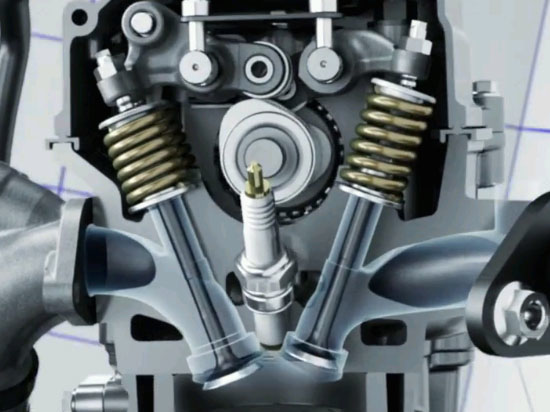Before we going to differentiate between two valves and four valves engine we would better have an idea about the valves system. Valves are the bridge between the carburation or fuel injection system and the cylinder. Both carburetor and fuel injection engine need air and fuel in a ratio, the mixture is fed to the combustion chamber. Valves take part in opening and closing the tunnel nozzle to intake air-fuel and exhaust air in a ratio. Here valve head gets pushed by the the camshaft lobes to open the nozzle. When the first valve opens the nozzle, the piston comes to pull the mixture (air and fuel) and supply to the cylinder, the piston returns by pushing combust air to exhaust through the second nozzle opened by another valve. The entire mechanism (intake, compression, power, and exhaust) leads the engine to produce acceleration to propel the motorcycle forward.
Two Valves
Usually, the two-valve system is operated by SOHC (Singel Over Head Camshaft) engine, comparatively simple engineering construction. Most of the budget friend commuters and naked sports motorcycles are incorporated with 2-valve engines. The largest valve takes part in opening the tunnel nozzle to intake air-fuel and the smaller one opens the nozzle to discharge the gases. Being simple construction it is more reliable, easy to maintain and has a budget-friendly setup. Moreover, two-valves engine provides a decent performance in regular use. Though two-valves system was designed for lower-segment commuter motorcycles, many 150 cc naked sports bike also comes with two-valve engines.
| Pros | Cons |
| Two-valve engines are designed in simple and convenient construction. | Two-valve engine unable to intake more air and exhust enough gases. |
| Two-valve engine provide good and decent performance. | The two-valve engines can’t generate higher accelerations. |
| As it mixes limited air with limited fuel, so two-valve engine provide better mileage. | It makes black smoke which impacts atmosphere. |
| Being a simple design it is comparatively lower maintenance. | |
| All technicians are familiar with this convenient system. |

Four Valves
A four-valve engine allows more air-fuel to intake and exhaust at a time because the two largest valves are integrated to intake and two to exhaust. Generally, four-valve setup is mated with DOHC (Double Overhead Camshaft) engine, here one camshaft operates two valves and the other camshaft operates the rest of two valves. Intending more flow both nozzle sizes are increased in the same ratio, a single valve is quite unable to open and close such a large nozzle. Two valves are employed to open and close each nozzle, one pair of valves intakes air-fuel, and the other pair discharges combusted gases. Nowadays, most of the premium segment motorcycles come with four-valve engines to lesser unburnt fuel or emissions and higher efficiency.
| Pros | Cons |
| Four-valve engine produces more power and torque against a little fuel consumption. | Four-valve engines are very complex and expensive to manufacture. |
| Seamless flow and discharging are essential for the proper function of an engine. | This system requires costly maintenance. |
| Four-valve setup is modern and advanced technology. | Being a complex construction, it is not easier to repair or servicing. |
| Each valve is smaller and lighter and doesn’t obstacle to higher acceleration. | |
| It is an eco-friendly system. |
Hopefully, the above blog dispelled your doubts and confusion thoroughly about the four-valve and two-valve engines. If you are still confused or ambiguous then feel free to leave a comment below which will be explained later. Thanks for your interest in deashbiker.com




























